What traditional clothes are worn by different nations of the world
23 May 2023One of the most crucial methods to maintain culture is through fashion. There are nations and civilizations all over the world where certain traditional clothing has withstood the test of time and remains relevant today. This article will look at 55 traditional clothing items worn by younger generations in various countries.
Fiji
The traditional attire of Fiji, known as sulu, is still fashionable today. Both men and women wear this kilt-like clothing. Sulus for women are referred to as sulu-i-ra, whereas sulu vakataga is the name for sulus for males.
This item of clothing is a rectangular piece that has various lengths. While the modern sulus has buckles, the traditional ones are tied at the waist. It is used for formal and semi-formal settings.
 @Today Im a Fiji Fashionista/Meechavelli/YouTube.com
@Today Im a Fiji Fashionista/Meechavelli/YouTube.com
Papua New Guinea
The most popular traditional garment in Papua New Guinea is the meri blouse. It has been worn by women since the era of the missionaries.
Meri blouses can be worn for both formal and casual settings; the difference lies in the design and materials used in construction. Additionally, the wearer determines the color and length.
 @✅PNG Traditional (Original) Meri Blouse Tutorial/ I Sew 10 Pieces A Day To Make Money/VlogMama/YouTube.com
@✅PNG Traditional (Original) Meri Blouse Tutorial/ I Sew 10 Pieces A Day To Make Money/VlogMama/YouTube.com
Bhutan
Younger generations still dress in the traditional Kira of Bhutanese ladies nowadays. In actuality, it serves as their national attire. An ordinary Kira dress has a rectangular piece of woven cloth attached to it.
This material is attached to the waist by a long belt and is affixed with brooches on both shoulders. Kira can be worn with a rachu and comes in several colors.
 @How to wear a Kira: Bhutanese traditional female costume/Gen Japan [English version]/YouTube.com
@How to wear a Kira: Bhutanese traditional female costume/Gen Japan [English version]/YouTube.com
Chile
One of the most well-liked traditional garments in Chile is the cueca dress. The dress is fitted and has a long skirt that falls just above the knees. A waist belt and a flowery motif are common features of cueca dresses.
They frequently appear in the national colors of Chile, which are white, blue, or red. Festivals and celebrations call for this outfit.
 @Chilean Traditional Dance (Conjunto Folklorico) (Part 4)/Chile N Thailand Travel/YouTube.com
@Chilean Traditional Dance (Conjunto Folklorico) (Part 4)/Chile N Thailand Travel/YouTube.com
Tonga
Tonga still wears a lot of tupenu, which is traditional apparel. The Tupenu is a wrapped garment with male and female variations that is quite similar to the Sri Lankan sarong.
The male version of the tupenu typically extends from the waist to the knees, while the female version typically extends from the waist to the ankles. Tupenu is available in various qualities for various events. As a result, there are specific tupenu for both formal and informal occasions as well as festivals.
 @Why Are Mats Important to Tongan Culture?/Fonua Foou/YouTube.com
@Why Are Mats Important to Tongan Culture?/Fonua Foou/YouTube.com
Uzbekistan
For many years, the distinctive central Asian suzani silk thread has been a staple of Uzbek fashion. Suzani, a lovely silk thread, is used to embroider regional apparel.
Shirts, dresses, and robes for men with the needlework stand out. Additionally, it is used to adorn home linens and bridal apparel.
 @Appearance of Uzbek Woman in 14 regions of Uzbekistan/Nodira Arapova/YouTube.com
@Appearance of Uzbek Woman in 14 regions of Uzbekistan/Nodira Arapova/YouTube.com
Spain
Spanish ladies still frequently wear the mantilla, a traditional head covering. Mantillas are typically worn during religious ceremonies and weddings and are made of silk or lace. It is typically fastened with pins and worn on a high comb called a peineta.
A black mantilla is ideal for a meeting with the Pope, whereas a white one is worn for church weddings and other celebrations.
 @COLOCACIÓN DE PEINETA Y MANTILLA/Cofradía Esclavas de la Soledad de Alcañiz/YouTube.com
@COLOCACIÓN DE PEINETA Y MANTILLA/Cofradía Esclavas de la Soledad de Alcañiz/YouTube.com
Tanzania
Tanzanian males still frequently dress in the traditional kanzu nowadays. This robe is available in white or beige. Kanzu is distinctive from other robes because it has a tassel hanging from the neck.
The kanzu is typically worn with a bishit and a kofia and is composed of silk or polyester. For weddings and other formal occasions, kanzu is frequently worn.
 @KIRONDE IN CULTURE: KANZU IN AFRICAN TRADITION/Kironde Knowledge Channel KKC/YouTube.com
@KIRONDE IN CULTURE: KANZU IN AFRICAN TRADITION/Kironde Knowledge Channel KKC/YouTube.com
Vietnam
The national clothing of the Vietnamese people is and has long been the o dài. It is a long, form-fitting tunic that is worn with pants.
O dai is a silk garment that serves as the official attire for various international Vietnamese beauty pageants. Although it was once a gender-neutral attire, áo dài is now primarily worn by women.
 @Traditional dresses in Vietnam with name / Vietnamese dresses name//STYLE POINT/YouTube.com
@Traditional dresses in Vietnam with name / Vietnamese dresses name//STYLE POINT/YouTube.com
Yemen
You can count on running into a futa—a traditional Yemenite outfit—on a regular basis. To deal with the oppressive heat and weather in that area, men wear a wraparound skirt.
Futa is often handcrafted and is available in a variety of hues, including black, white, and red, as well as designs like stripes and checkerboard. Due to the ease it provides, practically every Yemenite possesses a futa.
 @Dance by students from Yemen/Ludo Kuipers/YouTube.com
@Dance by students from Yemen/Ludo Kuipers/YouTube.com
Philippines
The traditional outfit known as barong tagalog serves as the Philippines' official attire. This costume for guys is a long-sleeved shirt with embroidery that is simply known as barong or baro.
The creation of barong tagalog came about through the fusion of pre-colonial Filipino and Spanish fashion elements. Although abacá was used to weave barong in the past, it is now created from materials including polyester, ramie, and silk. Tagalog barong is only used in formal settings.
 @ISLA STORY EP 3: Barong Tagalog, A Philippine Tradition/Isla Story/YouTube.com
@ISLA STORY EP 3: Barong Tagalog, A Philippine Tradition/Isla Story/YouTube.com
Malaysia
The baju kurung, the national clothing of Malaysia, has been popular for a long time. The word baju kurung, which roughly translates to "enclosed dress," describes this traditional Malaysian attire perfectly. A blouse and skirt make up a woman's baju karung.
The blouse features long sleeves, no collar, and falls to the mid-thigh region. On the other hand, the skirt is made from a long piece of fabric that has side folds. For festivals, a silk baju kurung is typically worn with a tudung.
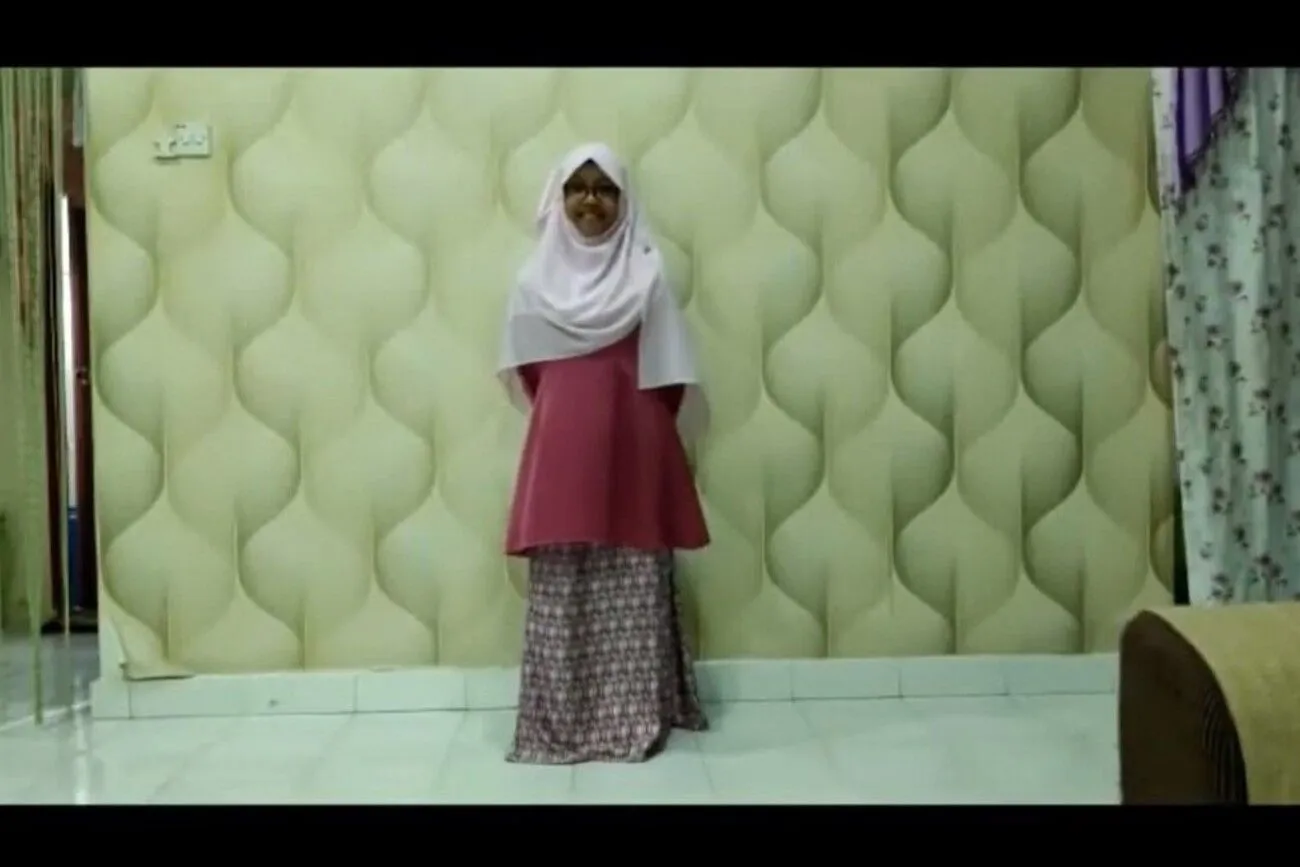 @BBB3403 - Malaysian Traditional Cloth/Hidayah Azren/YouTube.com
@BBB3403 - Malaysian Traditional Cloth/Hidayah Azren/YouTube.com
Romania
Romanians continue to wear the bihor jacket nowadays. When fashion superpower Dior created a collection that was influenced by the traditional jacket, it ignited criticism. The 19th century saw the introduction of Bihor, which has remained a favorite ever since.
It is fully hand-sewn and constructed of pure leather. Bihor jackets come in a variety of colors and embroidery styles. It is a common piece of apparel worn by both men and women.
 @Romanian People Found Dior Copied Their Traditional Clothing And Decided To Fight Back In Genius Way
@Romanian People Found Dior Copied Their Traditional Clothing And Decided To Fight Back In Genius Way
/Facts Verse/YouTube.com
Ukraine
The vyshyvanka, Ukraine's national clothing, is still widely worn and stylish today. Vyshyvanka is a creation of elaborate designs, much like its name implies sophistication. It is an embroidered shirt composed entirely of Ukrainian embroidery-specific patterns.
The standard hues of white, red, and black are present in all vyshyvanka attire, and green, blue, and yellow can be added as accent colors. Every third Thursday in May is designated as International Day of Vyshyvanka because it is a symbol of pride in one's country.
 @fashion culture || ukrainian traditional clothes || український традиційний костюм. Fashion history
@fashion culture || ukrainian traditional clothes || український традиційний костюм. Fashion history
/Black Belt Fashion/YouTube.com
South Africa
Native South African women who are married typically wear an izicolo. The material for izicolo is grass woven with either white or red cotton. Izicolo was once a symbol of marriage and was therefore sewed into the hair of the women. It could not be removed because to this.
Since the hats are no longer woven into the hair and are only worn on rare occasions, this practice has changed.
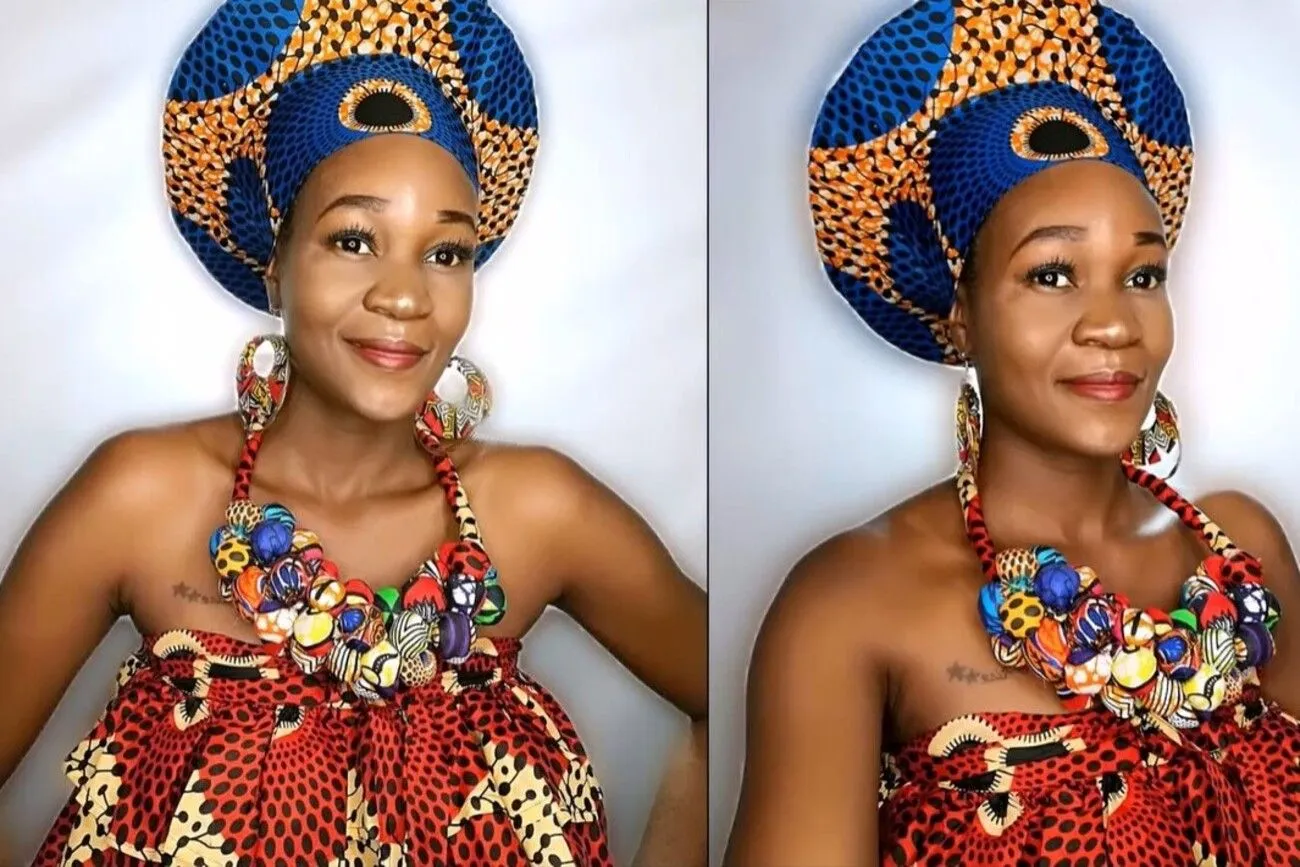 @DIY Isicholo (Traditional Zulu hat)| Beautarie (South african Youtuber)/Beautarie/YouTube.com
@DIY Isicholo (Traditional Zulu hat)| Beautarie (South african Youtuber)/Beautarie/YouTube.com
Kazakhstan
The traditional hat worn in Kazakhstan is called an aiyr kalpak. The aiyr kalpak is a cap with a pointy tip that is upturned. The headgear has a beautiful ornate pattern that captures the essence of Kazakh culture.
The designs on the hat signify wealth, social rank, and power and are typically worn by members of the upper class, such as royalty, the wealthy, and nobles.
 @Ak-kalpak craftsmanship/UNESCO/YouTube.com
@Ak-kalpak craftsmanship/UNESCO/YouTube.com
Greece
Greece, one of the world's first civilizations, is a nation rich in heritage and culture. The karagouni is one of many items of Greek traditional attire that are still in use today.
The layers of clothes that make up Karagouni comprise a long, sleeveless coat, a woolen outer garment, a white underdress, and an embroidered vest. A red apron follows to complete this look. Karagouni is worn on routine days as well as at formal events when additional jewelry are worn.
 @Greek history - Greek Women’s Costumes: Basic Styles and Influences/The Benaki Museum/YouTube.com
@Greek history - Greek Women’s Costumes: Basic Styles and Influences/The Benaki Museum/YouTube.com
Georgia
The chokha is a traditional Georgian garment that is still widely worn today. The chokha is actually seen as a representation of national pride.
At formal occasions, weddings, and other celebrations, Georgian men dress in a woolen coat with a high neck. The khevsur chohka, the adjarian chohka, the karti-kakheti chokha, and the generic caucasian chokha are the four main forms of chokha.
 @Georgian music by a local group wearing the traditional Georgian clothing (chokha/ჩოხა)
@Georgian music by a local group wearing the traditional Georgian clothing (chokha/ჩოხა)
/Tom Kerwin/YouTube.com
Qatar
The abaya is a traditional Qatari garment that is frequently misunderstood as a religious garment in the Middle East. Abaya is a loose-fitting black robe that is typically worn as an overgarment.
The women of Qatar use it as part of their daily attire. A black headscarf is frequently worn in addition to the abaya. A shayla is the name of this black headscarf.
 @Cheap and Best Abayas in Qatar | Fantastic Novelty At Safari Mall | Qatar Abayas/Moosi’z notebook/YouTube.com
@Cheap and Best Abayas in Qatar | Fantastic Novelty At Safari Mall | Qatar Abayas/Moosi’z notebook/YouTube.com
Bulgaria
Women in Bulgaria wear a dress called a "saya." This customary attire is often coat-like with a front opening that is worn over aprons and chemise. It resembles a kimono quite a bit.
A saya's style is dependent on the wearer, therefore it is available in a variety of hues, sleeve lengths, and fabric patterns. Depending on how elaborately embellished it is, saya can be worn for casual, semi-formal, or formal situations.
 @13 Unusual Bulgarian traditions/The Beauty of Bulgaria/YouTube.com
@13 Unusual Bulgarian traditions/The Beauty of Bulgaria/YouTube.com
Saudi Arabia
Saudi men and boys still wear the thobe, which is still quite fashionable today. It is an ankle-length, long-sleeved outfit that is also worn for religious purposes.
A thobe has a design that is very similar to a kaftan. Thobes come in a variety of hues, such as black, brown, white, and grey, but the most popular one is white. This outfit is typically worn over pants.
 @SAUDI CLOTHES| TRADITIONAL CLOTHES| BISHT| THOBE/Arnel Villarin/YouTube.com
@SAUDI CLOTHES| TRADITIONAL CLOTHES| BISHT| THOBE/Arnel Villarin/YouTube.com
Java
The kebaya is the traditional dress of Javanese people that is still worn today. It is a customary blouse-dress ensemble worn by women that was first seen in the Javanese Majapahit Kingdom.
Prior to 1600, only aristocrats, nobles, and members of the royal family wore the kebaya. In recent years, everyone has started using it. Lace, silk, velvet, cotton, and brocade are used to make kebayas.
 @kebaya clothes, customs, West Java province, Indonesia/world diversity/YouTube.com
@kebaya clothes, customs, West Java province, Indonesia/world diversity/YouTube.com
Samoa
Samoan sarongs called lavalava are worn by both men and women in the country.
Lavalava is available in a variety of designs and patterns. It is a single rectangular article of clothing worn as a skirt.
 @'Ie Lavalava- A Samoan Garment/P T/YouTube.com
@'Ie Lavalava- A Samoan Garment/P T/YouTube.com
Pakistan
In Pakistan, the traditional outfit that never goes out of style is the shalwar kameez. The term "shalwar kameez" refers to a two-piece outfit. A pair of pants known as a shalwar is typically broad at the waist and narrow at the bottom. Due to the elastic belt and drawstrings that are used to hold them up, the shalwar is typically pleated at the waist.
A long tunic called a kameez is typically worn over shalwar. Both men and women can wear shalwar kameez, but women typically do. Depending on the style, it can be worn for casual, semi-formal, or formal situations.
 @shalwar kameez punjabi dresses for girls |culture dresses |Pakistani cultural dress 2021/kubra's world/YouTube.com
@shalwar kameez punjabi dresses for girls |culture dresses |Pakistani cultural dress 2021/kubra's world/YouTube.com
Hawaii
The mu'umu'u is a loose, brightly colored dress. It often features vibrant floral prints or other traditional Hawaiian motifs. Originally made from kapa (bark cloth), modern mu'umu'u dresses are crafted from lightweight fabrics like cotton or silk. They still enjoy considerable popularity in Hawaii.
 @Mama Rauti Para: A mu'umu'u fashion show for Cook Island mamas/Tagata Pasifika/YouTube.com
@Mama Rauti Para: A mu'umu'u fashion show for Cook Island mamas/Tagata Pasifika/YouTube.com
Sardinia
The coppola, a classic Italian cap, is well-liked throughout Italy, including Sardinia. The headgear is now often worn all around the world.
Velvet, tweed, linen, cotton, wool, or denim are the typical materials used to make it. Coppola works well as a summer cap but is also worn as a winter beret.
 @Orchard Slim Ivy Cap - Ultra Slim Flat Cap from Italy/HATS & GUITARS/YouTube.com
@Orchard Slim Ivy Cap - Ultra Slim Flat Cap from Italy/HATS & GUITARS/YouTube.com
China
The hanfu, one of the earliest Chinese traditional garments, is still in fashion today. The hanfu is a long, flowing robe that has a loose top piece called the "yi" and a skirt-like bottom piece called the "chang," as well as a waist belt.
The belt is used to close the loose-fitting hanfu. For formal and semi-formal occasions, hanfu is worn.
 @Super Night: How many styles of Hanfu from different dynasties can you recognize?/CGTN/YouTube.com
@Super Night: How many styles of Hanfu from different dynasties can you recognize?/CGTN/YouTube.com
Indonesia
The Indonesian fabric known as batik is fairly well-liked all around the world. Indonesian men frequently wear shirts made of batik fabric, which is traditionally created by artists. By using wax-resist dying processes, detailed patterns are created on fabric to create batik.
Batik shirts come in two different styles: long-sleeved batik shirts for formal occasions, and short-sleeved batik shirts for semi-formal and casual occasions.
 @How to wear a tube batik sarong/DIY Pattern/YouTube.com
@How to wear a tube batik sarong/DIY Pattern/YouTube.com
Germany
German traditional attire, known as the dirndl, is still worn today. A wide blouse, a long skirt with a corsage, and a vibrant apron make up a dirndl, a three-piece costume.
The dirndl was once the labor attire of servants, but modernity has made it more elegant. Pink, crimson, and black are just a few of the colors available for dirndl blouses. At Oktoberfest, it's not unusual to see ladies dressed in this attire.
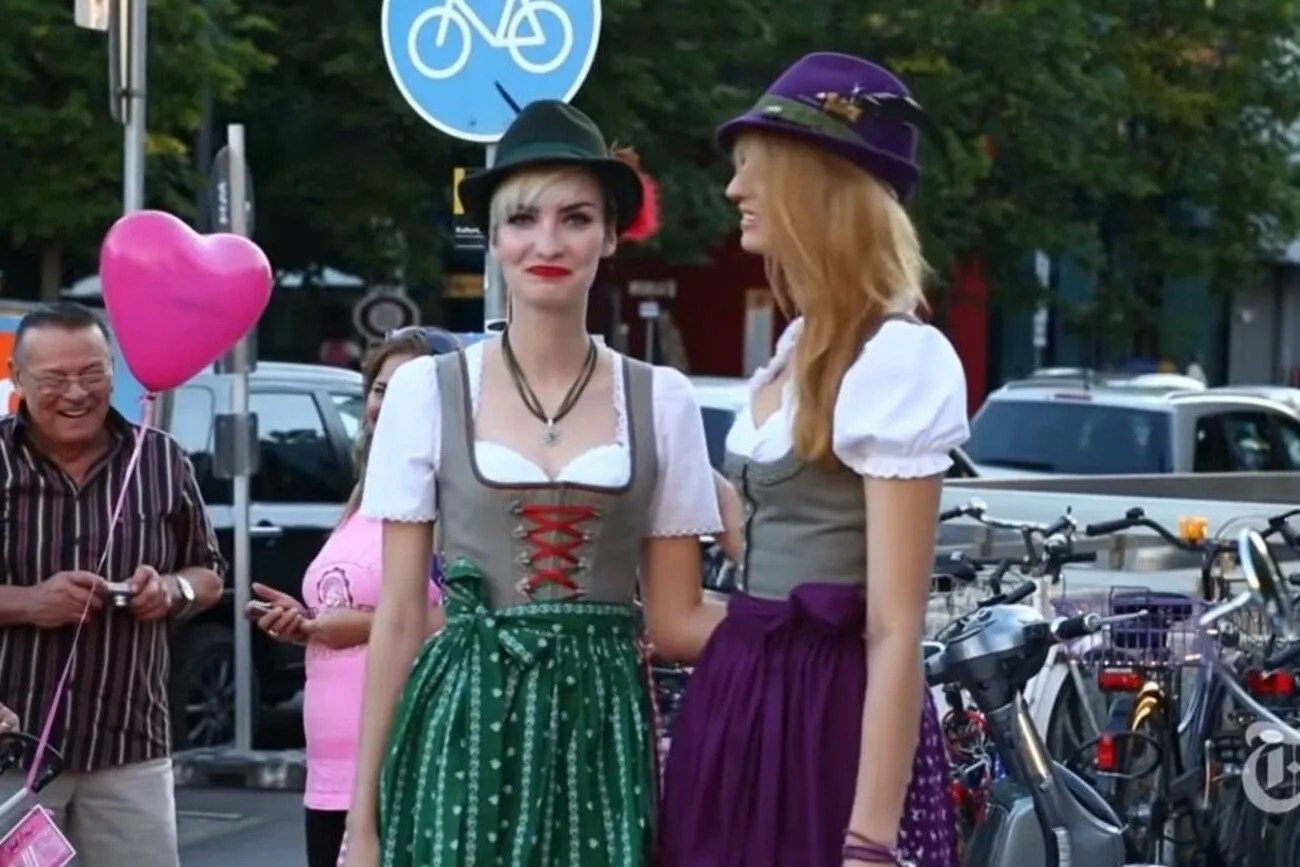 @Germany's Dirndl Revival/The New York Times/YouTube.com
@Germany's Dirndl Revival/The New York Times/YouTube.com
Estonia
The national clothing of Estonians is called a rahvariided, which translates to "clothes of the people" in English. Rahvariided is still worn nowadays during national festivals since it is so closely associated with the national identity and sense of statism of the Estonian people.
Gloves and belts are also included in this outfit, which is composed of wool outerwear and linen clothing.
 @TALLINN Estonia - Medieval Old Days Festival - Music, Traditional Clothes, Culture/Frugal Travellers/YouTube.com
@TALLINN Estonia - Medieval Old Days Festival - Music, Traditional Clothes, Culture/Frugal Travellers/YouTube.com
Armenia
The Taraz is a traditional Armenian costume, and its design varies across regions. It is often made of vibrant, colorful fabric and is adorned with embroidery and intricate patterns. Armenians also wear a traditional headdress. This includes a conical hat made of felt or wool and is often adorned with decorative elements. Both men and women wear it. Traditional Armenian clothing is an essential aspect of the country's cultural identity, and efforts are made to preserve and celebrate these rich sartorial traditions.
 @Armenian traditional dress (Taraz)/ArmStory/YouTube.com
@Armenian traditional dress (Taraz)/ArmStory/YouTube.com
Sri Lanka
The most unusual traditional attire in Sri Lanka is the sarong for males, which is still in style today. A lengthy piece of cloth is used to wrap the body in it.
In certain regions, the sarong is worn over a long-sleeved shirt; in hotter ones, it is worn alone. The sarong can be worn in a variety of ways; some men wrap it around themselves like a skirt, while others tie a knot at the front.
 @2 Ways to Wear a Sarong - Sri Lankan /Culture Class Travel/YouTube.com
@2 Ways to Wear a Sarong - Sri Lankan /Culture Class Travel/YouTube.com
Nigeria
In Nigeria and other West African nations, the agbada is one of the most widely worn traditional garments among men. The agbada is a loose, wide-sleeved robe typically woven of aso-oke.
It is typically used for rituals and has beautiful needlework. Various styles of the modern agbada are available according on the wearer's preferences.
 @40+ LATEST AGBADA STYLE FOR MEN 2021: 40+ agbada design)/NOBLE-TEE Fashion/YouTube.com
@40+ LATEST AGBADA STYLE FOR MEN 2021: 40+ agbada design)/NOBLE-TEE Fashion/YouTube.com
Mongolia
The deel is the Mongol people's traditional attire. The Turks and Central Asian tribes both wear this attire, which has been around for generations.
Deel, which is frequently constructed of brocade, cotton, wool, or silk, is quite similar to a kaftan. Most deels are knee-high or lower. Deels are available in a range of hues, including as burgundy, olive, and blue.
 @Mongolians in Deel | National Costume Festival | MNB World/MNB WORLD/YouTube.com
@Mongolians in Deel | National Costume Festival | MNB World/MNB WORLD/YouTube.com
Japan
The kimono, or "thing to wear," is the traditional apparel of Japan and is still in style today. Its name translates to "a thing to wear." In Japan, the kimono is worn for formal ceremonies and significant events.
In fact, because of how formal it is, this attire is linked to politeness and good manners. Kimonos are typically hand-stitched, while machine-made versions also require some hand sewing.
 @Living in Japan 🇯🇵 | Wearing a Kimono in ASAKUSA 🗼 How to rent a kimono in Japan/kimdaovlog/YouTube.com
@Living in Japan 🇯🇵 | Wearing a Kimono in ASAKUSA 🗼 How to rent a kimono in Japan/kimdaovlog/YouTube.com
Portugal
The Portuguese are one of the oldest civilizations in contemporary Europe and are renowned for their distinctive style. One of their remaining traditional outfits is the saia skirt worn by women.
The saia frequently features red and white stripes or checks, and is finished off with a white shirt and handkerchief for hair covering.
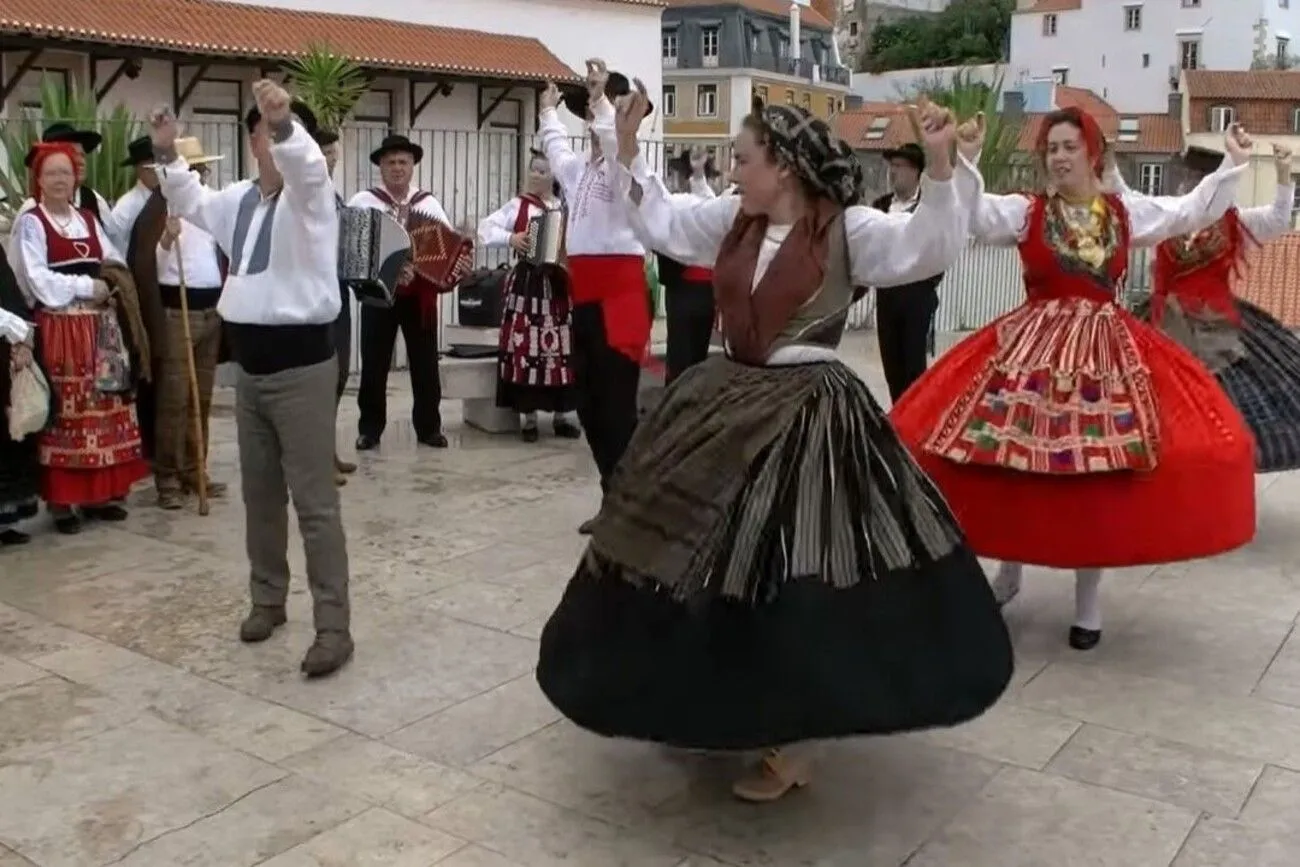 @Lisbon, Traditional Portuguese Folk Dance - Part 2/Serge Guez/YouTube.com
@Lisbon, Traditional Portuguese Folk Dance - Part 2/Serge Guez/YouTube.com
Eritrea
Ethiopian and Eritrean women continue to dress in the traditional habesha kemis. It is an ankle-length cotton dress that is typically worn at formal occasions.
The three main hues of Habesha kemis are beige, grey, and white. Hebesha kemis is typically worn with a shawl called a netela.
 @Brhan Ethiopian and Eritrean habeshan dresses | Habesha Kemis|Ethiopian Traditional|Eritrean|Zuria/Brhan/YouTube.com
@Brhan Ethiopian and Eritrean habeshan dresses | Habesha Kemis|Ethiopian Traditional|Eritrean|Zuria/Brhan/YouTube.com
Morocco
Moroccan ladies typically dress in the Takeshita, an elegant two-piece traditional attire. The Takchita and Dfina layers make up this ensemble.
The Takeshita, the top layer, is typically embellished with sequins and embroidery, giving the women a lovely appearance. Especially at weddings, takeshita is frequently worn.
 @Moroccan Traditional Dresses | القفطان المغربي/LN Super Cuisine/YouTube.com
@Moroccan Traditional Dresses | القفطان المغربي/LN Super Cuisine/YouTube.com
Panama
The Panamanians wear the pollera as their national attire. It is a two-piece ensemble made up of a long skirt and a shirt that is typically worn at festivals and festivities.
The Pollera typically has a white background with flower patterns adorning it, giving it a beautiful appearance.
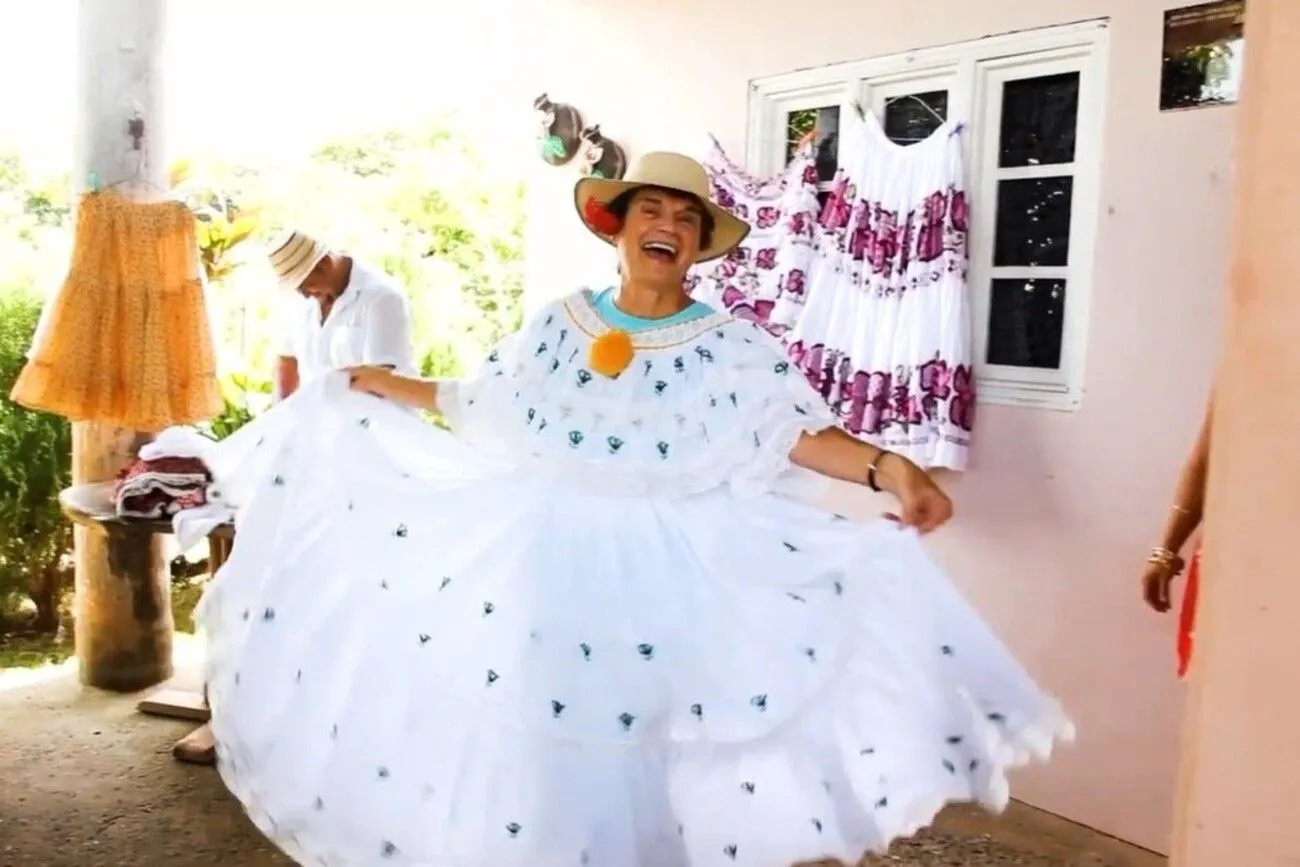 @Panamanian Traditional Dress/World Travel Guides/YouTube.com
@Panamanian Traditional Dress/World Travel Guides/YouTube.com
Scandinavia
The bunad is a vibrant Norwegian traditional clothing that is very well-liked in Scandinavia. There are bunads for guys as well, despite the fact that they are typically worn by women.
Bundads are a form-fitting garment made of wool that is embellished with buttons, metal buckles, and jewels. At weddings and other occasions, people wear it as a joyful costume.
 @The Norwegian Traditional Costume - BUNAD | Visit Norway/Visit Norway/YouTube.com
@The Norwegian Traditional Costume - BUNAD | Visit Norway/Visit Norway/YouTube.com
Thailand
Thailand's traditional attire is called Chut Thai. It is a traditional Thai garment that also serves as the country's official attire for ceremonial events. The sabai, the blouse, and the pha nung are the three components that make up the chut Thai's design.
The pha nung is worn around the waist, whereas the sabai is a straightforward strip of cloth draped across the shoulder and chest.
 @[TH SUB] 泰國傳統服裝 คนไทยใส่ชุดไทย @SENSE OF THAI 🇹🇭/Pasika K/YouTube.com
@[TH SUB] 泰國傳統服裝 คนไทยใส่ชุดไทย @SENSE OF THAI 🇹🇭/Pasika K/YouTube.com
India
The word "saree" can also be used to refer to a traditional piece of clothing worn in India. Despite being primarily worn by women, it is a piece of apparel for both sexes. A single piece of unstitched fabric with heavier parts acting as a drape, the sari was traditionally worn.
Saree today are made from a variety of modern materials, including silk, cotton, synthetic fiber, and more. The sari can be used as regular clothing or an heirloom passed down through the generations.
 @How To Wear Heavy Saree Perfectly | Party Sari Draping Idea To Look Slim & Tall In Proper Pleats
@How To Wear Heavy Saree Perfectly | Party Sari Draping Idea To Look Slim & Tall In Proper Pleats
/Swati Mallick/YouTube.com
Hungary
The babushka is one of the few traditional garments that is still worn in Hungary. The babushka stands out in a place where fashionable modern apparel is common.
The babushka, a scarf that is typically worn over the head, goes well with contemporary attire. This scarf is available in a variety of hues, patterns, and looks. Even outside of Europe, other individuals have embraced it.
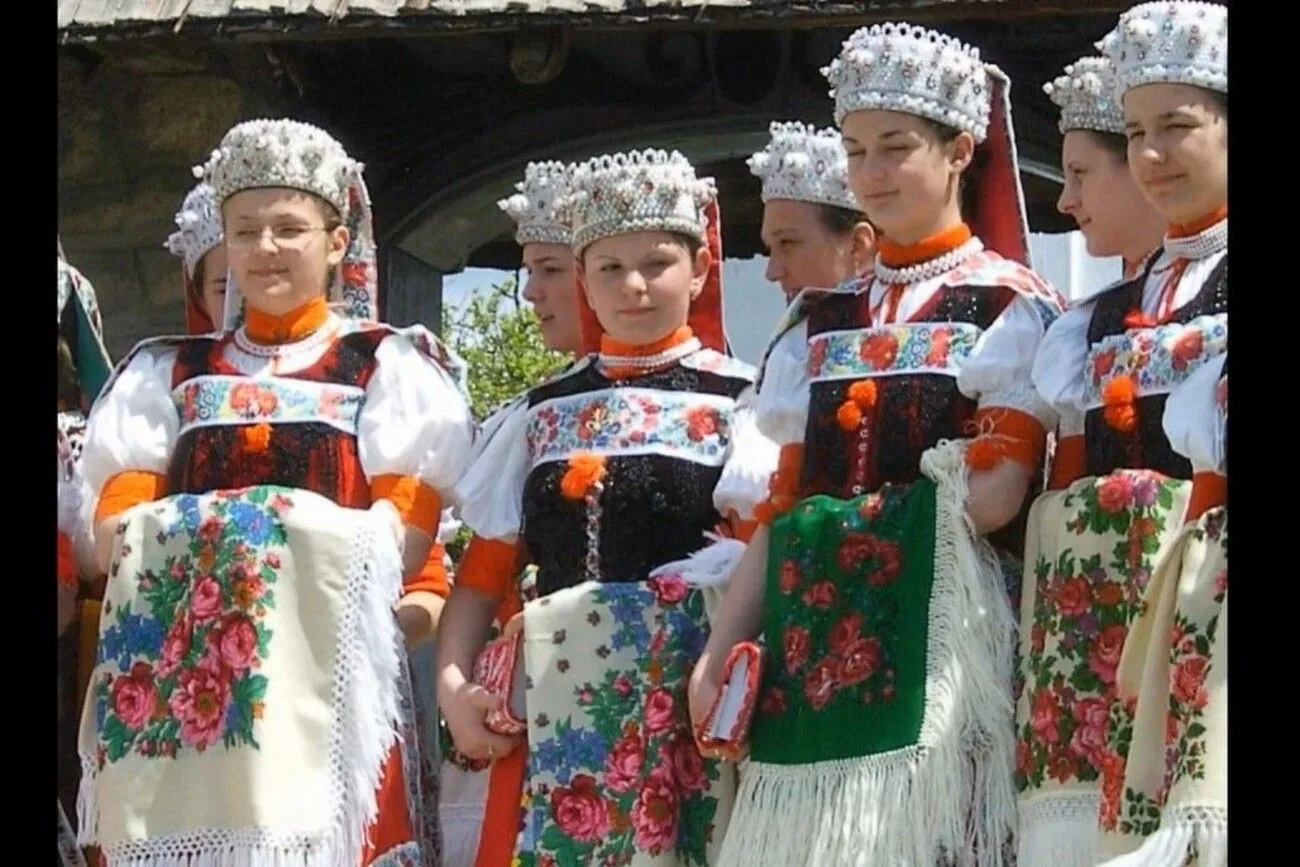 @Hungarian traditional folk costumes. Magyar népviseletek./györgyi kovács/YouTube.com
@Hungarian traditional folk costumes. Magyar népviseletek./györgyi kovács/YouTube.com
Ghana
One of the most well-known African textiles is the kente fabric from Ghana. It was the ideal choice for royalty back then, and leaders and monarchs used it for beauty ornamentation.
Today, anyone can wear a kente cloth, which is utilized not just for ceremonial events and special occasions but also in daily life. Kente fabric is now made of cotton rather than the raffia palm fibers that were once used to make it.
 @15 Super Beautiful African Traditional Clothes/
@15 Super Beautiful African Traditional Clothes/
ohAFRO/YouTube.com
Tibet
The primary traditional article of clothing for Tibetans is the Tibetan robe. The robe is loose-fitting, has arms longer than 30 cm, and has a wide waist. It is referred to as "Zhuba" in Tibetan. Tibetan robes frequently include pulu, fine fur, or decorative fabric edging at the lower hem.
For adornment, it frequently contains leopard skin or black stripes. Tibetan robes come in five different varieties: pulu woolen robes, lambskin robes, sheepskin robes, and woolen robes.
 @Watch traditional Tibetan costumes in 30 seconds/CGTN/ YouTube.com
@Watch traditional Tibetan costumes in 30 seconds/CGTN/ YouTube.com
South Korea
The young generation continues to wear hanbok, which is traditional dress from South Korea. This apparel typically has basic, brightly colored, no-pocket designs.
Hanbok can be worn to both formal and semi-formal occasions, including parties and festivals. Hanbok, which was very fashionable during the Joseon era, has endured and is still fashionable now.
 @Korean hanbok: How and when to wear the traditional Korean dress / 전통 한복 체험기/KST by The Korea Times/YouTube.com
@Korean hanbok: How and when to wear the traditional Korean dress / 전통 한복 체험기/KST by The Korea Times/YouTube.com
Peru
The Peruvian Quechua women traditionally wear a cape called a lliclla. The lliclla is a square-woven cloth that covers the shoulders and back. It is fastened at the front with a straight pin called a tupu.
Llicllas are displayed during festivals and special events and are colored brightly. Women also utilize the llicllas to carry their children.
 @The Anniversary Festival of Cusco, Peru | A Living Colorful Tradition/Salkantay Trekking/YouTube.com
@The Anniversary Festival of Cusco, Peru | A Living Colorful Tradition/Salkantay Trekking/YouTube.com
Kenya
The traditional attire worn by Kenyans is called shká. It is a sheeted garment that is often worn on the body.
These outfits typically come in red, frequently paired with different designs and hues like floral and checkered motifs. The Massai are the group who wear shaka the most.

Scotland
The Scottish kilt is well-liked around the world. The Scottish kilt is frequently mistaken for a men's skirt and has checkered designs. It's fascinating to note that both men and women wear it.
Even today, you may still see people wearing Scottish kilts at football games, weddings, graduations, and Christmas celebrations.
 @Why every man should wear a kilt (from man wants to cut my pants)/Sikkant/YouTube.com
@Why every man should wear a kilt (from man wants to cut my pants)/Sikkant/YouTube.com
Turkmenistan
Even today, Khalat is widespread in Turkmenistan. Khalat, a knee-length robe worn over other garments, is typically composed of cotton or silk. The khalat's designs are always specific to the wearer's village of origin.
It is available in a variety of hues, including red, blue, white, and black. Khalats are worn for easygoing occasions.
 @Bahar Hojayewa -- Turkmenistan [Official Music Video] 2023/Bahar Hojayewa_official/YouTube.com
@Bahar Hojayewa -- Turkmenistan [Official Music Video] 2023/Bahar Hojayewa_official/YouTube.com